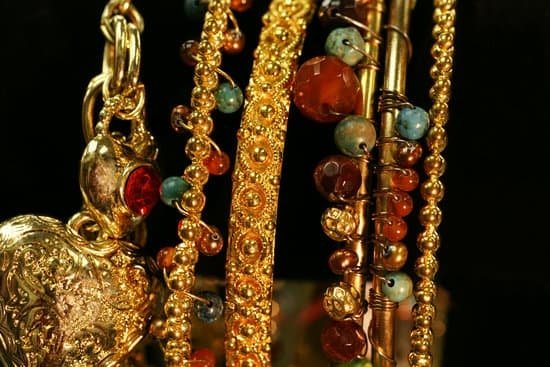The history of jewelry crafting rings spans centuries, with a rich and fascinating evolution that mirrors the development of human civilization. From ancient origins to modern innovations, the art of ring making has been shaped by cultural, technological, and artistic influences. This article will delve into the captivating journey of jewelry crafting rings, exploring its ancient beginnings, precious materials, cultural significance, and historic advancements.
The craft of jewelry making dates back to ancient civilizations, where early techniques and materials were used to create intricate and meaningful pieces. The use of precious metals and gemstones has played a significant role in ring crafting, symbolizing wealth, power, and prestige across different cultures.
As we examine the historical timeline of ring making, from the Middle Ages to the Industrial Revolution and into the present day, it becomes clear that this art form has continuously evolved while retaining its enduring legacy.
By tracing the history of jewelry crafting rings, we gain insight into how different cultures have influenced and shaped this craft over time. From the golden age of ring making in the Renaissance and Baroque period to contemporary trends and innovations in modern times, each era has left its own mark on the artistry and significance of crafting these cherished pieces. Join us as we embark on a journey through time to uncover the captivating evolution of jewelry crafting rings.
Ancient Origins
The history of jewelry crafting rings can be traced back to ancient civilizations, where early techniques and materials were used to create these timeless pieces. In ancient Mesopotamia, Egypt, and Greece, artisans utilized various methods such as soldering, engraving, and casting to craft rings. The materials used included gold, silver, bronze, and precious gemstones such as lapis lazuli, turquoise, and carnelian.
One of the earliest known examples of ring crafting dates back to Ancient Egypt around 2500 BCE. These early rings were often made from natural materials such as bone or leather. As civilization progressed, metalworking techniques advanced, leading to the use of precious metals like gold and silver in ring making. Intricate designs featuring symbolic motifs and hieroglyphics became popular during this time.
Throughout history, different cultures have contributed to the evolution of ring crafting. In ancient Rome, signet rings were commonly used as a symbol of authority and served as a personal seal for important documents. During the Byzantine Empire, religious symbols and motifs were incorporated into ring designs to reflect the devout beliefs of the era. Each culture’s unique artistic traditions and craftsmanship influenced the techniques and styles of ring making.
| Early Techniques | Materials Used |
|---|---|
| Soldering | Gold |
| Engraving | Silver |
| Casting | Bronze |
Precious Metals and Gemstones
The significance of precious metals and gemstones in ring crafting is deeply rooted in the history of jewelry making. From ancient civilizations to modern times, these materials have played a crucial role in the creation of exquisite and ornate rings. The use of precious metals such as gold, silver, and platinum, along with dazzling gemstones like diamonds, rubies, sapphires, and emeralds have added immense value and allure to rings throughout the ages.
In ancient times, jewelry crafting rings were often made from materials that were readily available such as bone, wood, and shells. However, as civilizations progressed, the use of precious metals became more widespread. The Egyptians, for example, were known for their mastery in working with gold and incorporating colorful gemstones into their intricate designs. The craftsmanship of these early jewelers set the foundation for the use of precious materials in ring making.
During the Renaissance and Baroque periods, there was a surge in the popularity of rings adorned with elaborate gemstone settings. Royals and nobles commissioned opulent rings that showcased their wealth and power through the use of rare and valuable stones. These periods marked a golden age in ring making as skilled artisans created masterpieces using a combination of precious metals and gemstones.
The significance of using precious metals and gemstones continues to be relevant in modern ring crafting. While contemporary trends may lean towards minimalist designs or unconventional materials, traditional craftsmanship still values the beauty and durability of these classic elements. Today’s jewelry makers continue to create stunning rings that highlight the timeless allure of precious metals and gemstones.
Cultural Significance
Throughout history, various cultures have played a significant role in influencing the art of ring making. From ancient civilizations to modern societies, each culture has contributed unique techniques and designs to the craft of jewelry crafting rings.
In ancient Egypt, for example, rings were often crafted using materials such as gold and precious gemstones. These rings were not only used for adornment but also held symbolic meaning, with intricate engravings and symbols representing religious beliefs and social status.
In contrast, in ancient Greece, rings served as a status symbol and were often exchanged as gifts during important ceremonies. The Greeks favored the use of intricate metalwork and delicate designs, often incorporating mythological motifs into their ring crafting.
The ancient Romans also made significant contributions to the art of ring making. Roman rings were commonly made from materials such as iron, bronze, and gold, and featured elaborate designs that reflected the wearer’s social standing. Signet rings, for instance, were widely used for sealing important documents and were personalized with engraved family crests or symbols.
These diverse cultural influences continue to impact modern ring making techniques and designs, showcasing the enduring legacy of the history of jewelry crafting rings.
| Culture | Influence on Ring Making |
|---|---|
| Ancient Egypt | Use of gold and precious gemstones; symbolic engravings |
| Ancient Greece | Incorporation of mythological motifs; intricate metalwork |
| Ancient Rome | Utilization of iron, bronze, and gold; personalized signet rings |
The Middle Ages
During the Middle Ages, the art of jewelry crafting rings saw significant advancements in technique and design. This period, also known as the Medieval era, spanned from the 5th to the late 15th century and was characterized by a flourishing of craftsmanship and a growing demand for ornate and intricate jewelry pieces.
The use of precious metals such as gold and silver became more prevalent during this time, with skilled artisans employing techniques such as filigree, engraving, and setting gemstones to create stunning ring designs. Rings were often adorned with religious symbols, elaborate patterns, and colorful gemstones, reflecting the prevailing cultural and religious beliefs of the time.
In addition to serving as decorative accessories, rings in the Middle Ages also held symbolic significance. They were worn as status symbols by the nobility and clergy, serving as indicators of wealth, power, and religious devotion. Moreover, rings were exchanged as tokens of love and betrothal, marking significant milestones in personal relationships. The craftsmanship involved in creating these rings during this period laid the foundation for many of the techniques still used today.
- Advancements in metallurgy allowed for greater variation in ring designs
- Filigree and engraving techniques became more refined
- Rings served as symbols of status, wealth, devotion, and love
Renaissance and Baroque Period
During the Renaissance and Baroque Period, jewelry crafting and ring making experienced a significant evolution, marking what is often referred to as the Golden Age of Ring Making. During this time, the art of jewelry crafting reached new heights in terms of design, craftsmanship, and the use of precious materials.
The Renaissance period saw a renewed interest in classical art and culture, leading to a revival of ancient techniques and designs in jewelry crafting. This led to the use of intricate filigree work, enamel detailing, and more elaborate designs in ring making. Gemstones such as rubies, emeralds, sapphires, and diamonds were increasingly incorporated into ring designs during this period.
In addition to the advancements in design and materials, the significance of rings took on a new meaning during the Renaissance and Baroque Period. Rings became not only symbols of wealth and status but also expressions of love, commitment, and religious devotion. The use of inscriptions, symbols, and personal motifs on rings became popular during this time, adding a deeper layer of meaning to these pieces.
- Innovations in gemstone cutting techniques
- The use of intricate filigree work
- Symbolism and cultural significance in ring designs
During this era, it’s no surprise that jewelry crafting rings reached new levels of artistry and sophistication. This period laid the foundation for many of the techniques and design elements still used in ring making today.
Industrial Revolution
The industrial revolution marked a significant shift in the history of jewelry crafting rings, as it brought about mass production and changes in the way jewelry was made. This era saw the introduction of new technologies and machinery that revolutionized the craft, making it possible to produce jewelry on a much larger scale than ever before.
Technological Advancements
During the industrial revolution, the invention of steam-powered machinery and new manufacturing processes transformed the way jewelry was crafted. These technological advancements allowed for more efficient production methods, which in turn led to an increase in the availability of jewelry, including rings, to a wider range of consumers.
Changes in Materials and Designs
With mass production came changes in the materials used for ring crafting. While precious metals and gemstones continued to be popular choices for crafting rings, alternative materials such as glass and faux gemstones also began to be used in order to meet the demand for affordable jewelry. Additionally, machine-made designs became more prevalent, leading to a standardized look for many types of rings.
Social Impact
The mass production of jewelry during the industrial revolution also had a significant impact on society. Jewelry crafting rings became more accessible to people from varying socio-economic backgrounds, allowing individuals from all walks of life to adorn themselves with fashionable accessories. This shift in accessibility contributed to the democratization of fashion and self-expression through jewelry.
Modern Era
The modern era has brought about a myriad of contemporary trends and innovations in the world of ring crafting. With advancements in technology, changes in fashion, and evolving consumer preferences, the art of jewelry crafting rings has experienced a significant transformation.
Technological Innovations
Today, jewelry craftsmen have access to state-of-the-art tools and machinery that have revolutionized the process of ring making. Computer-aided design (CAD) software allows designers to create intricate and detailed ring designs with precision and efficiency. Additionally, 3D printing technology has opened up new possibilities for experimenting with unconventional shapes and materials in ring crafting.
Sustainable Practices
In response to growing environmental concerns, there has been a shift towards sustainable practices in the jewelry industry. Many modern ring craftsmen are embracing ethical sourcing of materials, recycling precious metals, and using lab-grown gemstones to reduce the ecological impact of their creations. This focus on sustainability not only appeals to conscientious consumers but also reflects a commitment to responsible manufacturing within the industry.
Personalization and Customization
One of the defining trends in modern ring crafting is the emphasis on personalization and customization. Customers today seek unique, one-of-a-kind pieces that reflect their individual style and personality. From engraved messages and initials to bespoke designs tailored to specific preferences, custom-made rings have become increasingly popular in the contemporary jewelry market.
As we look at the current landscape of jewelry crafting rings, it is evident that this ancient art form continues to evolve with changing times. The modern era has brought about an exciting fusion of tradition and innovation, paving the way for endless creativity and possibilities in ring making.
Conclusion
In conclusion, the history of jewelry crafting rings is a rich tapestry of cultural, technological, and artistic evolution. From the early techniques and materials used in ancient times to the modern innovations in contemporary ring crafting, the art of making jewelry has stood the test of time. The enduring legacy of jewelry crafting rings is a testament to their timeless appeal and significance in human societies.
Throughout history, precious metals and gemstones have held great significance in ring crafting, symbolizing wealth, status, and love. Different cultures have also influenced ring making, each adding their unique aesthetic and symbolism to these timeless pieces. The advancements in jewelry crafting during the Middle Ages, Renaissance, and Baroque period paved the way for intricate designs that are still admired today.
The industrial revolution brought about mass production and changes in the way jewelry was crafted, making it more accessible to a wider audience. Despite these changes, contemporary trends and innovations in ring crafting continue to captivate consumers with new designs while maintaining a connection to the traditions of the past. In essence, the history of jewelry crafting rings is a story of craftsmanship, beauty, and enduring legacy that continues to enchant us today.
Frequently Asked Questions
What Is the History of Jewelry Rings?
The history of jewelry rings dates back thousands of years, with evidence of rings being worn in ancient Egypt, Rome, and Greece. Rings have been used to symbolize love, commitment, status, and religious beliefs throughout history.
What Is the History of the Beginning of Jewelry Making?
Jewelry making has its roots in prehistoric times when early humans used natural materials like feathers, bones, and shells to create decorative items. Over time, metalworking techniques developed, leading to the creation of more intricate jewelry pieces.
How Can You Tell How Old an Antique Ring Is?
There are various ways to determine the age of an antique ring. Examining the craftsmanship, materials used, and any hallmarks or engravings can provide clues about its age. Consulting experts and conducting research can also help in dating antique rings accurately.

Welcome to my jewelry blog! My name is Sarah and I am the owner of this blog.
I love making jewelry and sharing my creations with others.
So whether you’re someone who loves wearing jewelry yourself or simply enjoys learning about it, be sure to check out my blog for insightful posts on everything related to this exciting topic!





